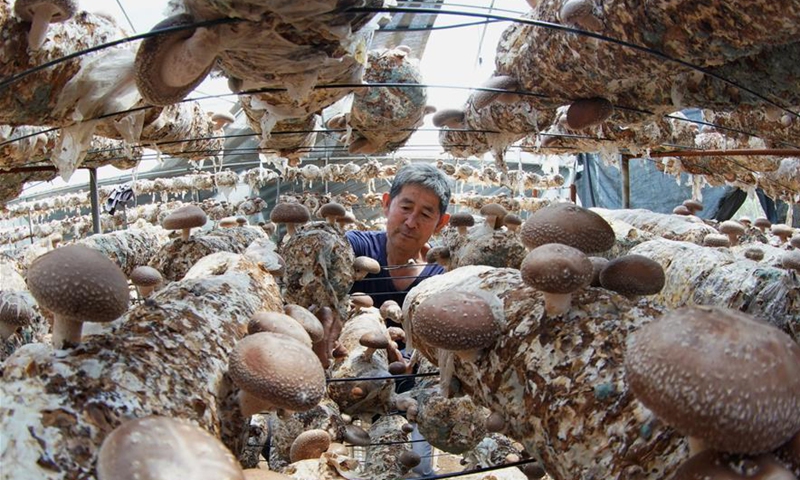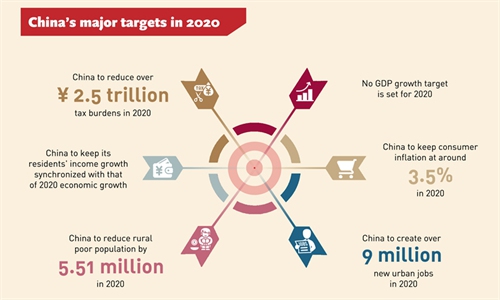
A farmer picks mushroom at a planting base in Louzhangzi Township in Qinglong Manchu Autonomous County, north China's Hebei Province, May 20, 2020. The local government has made great efforts to develop the mushroom planting industry in recent years as a way to boost local people's income and get rid of poverty. (Xinhua/Zhu Xudong)
China has the "absolute capacity" and confidence to accomplish its poverty alleviation goal in 2020 despite pressure from the COVID-19, as 95 percent of it has been achieved, experts say, as the Government Work Report reaffirmed the country's commitment to bring all residents out of poverty this year.
In the Government Work Report presented to the National People's Congress session on Friday, Premier Li Keqiang said China will resolutely win the battle against poverty in 2020 by strengthening the support to poverty-hit areas.
"Considering China has finished about 95 percent of the goal of poverty alleviation set in 2012, and the government's further strengthened support measures this year, China has the absolute capacity to achieve the goal despite the pandemic," Li Chang'an, a professor at the University of International Business and Economics' School of Public Administration, told the Global Times.
"Being firm on reaching the poverty alleviation goal - a solemn commitment of the central government to the Chinese people - shows China's confidence and determination on its commitment," Li said.
The report elaborated the measures and policies for the final battle against poverty. This includes improving the mechanism for monitoring and helping people who have returned to poverty, creating jobs for migrant workers, and deepening cooperation between western and eastern areas.
The government will also raise the minimum purchase price for grains, and increase rewards to major grain-producing counties, the report said, to increase farmers' income.
Official data shows that as of the end of 2019, the Chinese population below the poverty line has dropped to 5.51 million from 98.99 million in 2012 - a nearly 95 percent decrease, and the poverty occurrence ratio has declined from 10.2 percent in 2012 to 0.6 percent in 2019.
Among the 5.51 million people still in poverty, 3.23 million are from western China, while 1.81 million are from central China, and 470,000 from eastern China.
However, while confident, many challenges should not be ignored, especially the impact the epidemic brought on people living in poverty. For example, due to the lockdowns, many migrant workers were not able to seek employment, Li noted.
Slower economic growth also poses a risk of a return to poverty as many factories have reduced production or even suspended operations, Li said, adding that due to the pandemic's impact on China's economy, two major tasks must be done.
"The first is to utilize support measures to lift the 5.51 million people out of poverty, and the second is to consolidate the already-made achievements by preventing people who have already been lifted out of poverty from returning," Li said.

